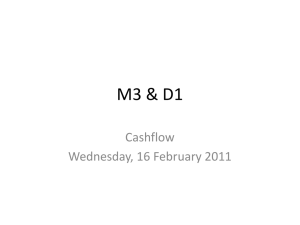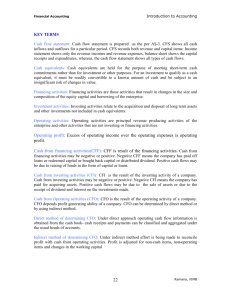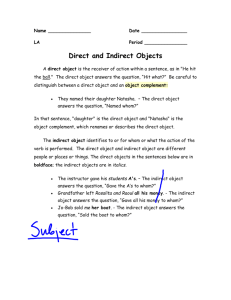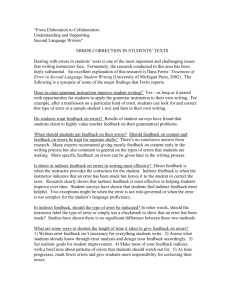A2 - 1 Analysis of Cash Flows
advertisement
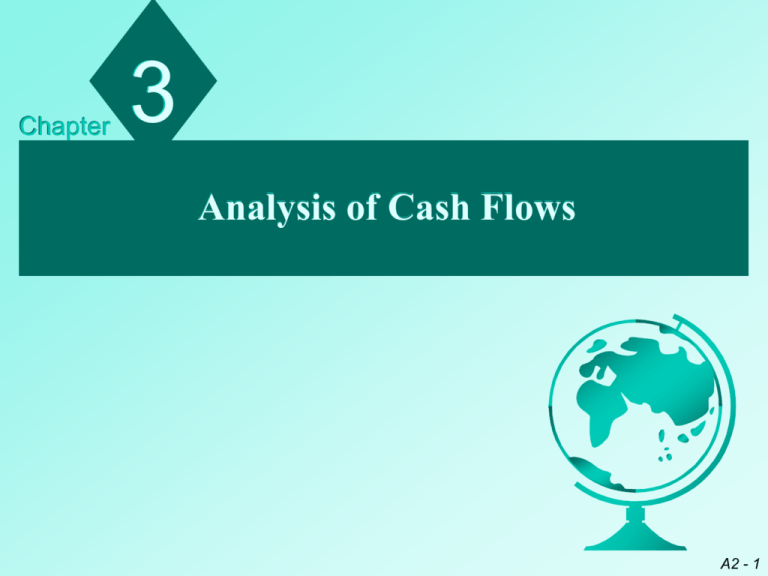
Chapter 3 Analysis of Cash Flows A2 - 1 Chapter Objectives • Describe the three components of a cash flow statement • Distinguish between direct method and indirect method cash flow statements • Show how to use the transactional analysis method to prepare a direct method cash flow statement using financial statement data. A2 - 2 Statement of Cash Flows Cash flow data supplement the information provided by the income statement as both link consecutive balance sheet. The statement of cash flows reports all the cash inflows and outflows of a specified period. The classification of cash flows among the following activities are essential to the analysis of cash flow data: • Cash flows among operating activities • Investing Cash Flow (CFI) • Financing Cash Flow (CFF) A2 - 3 Statement of Cash Flows, cont. Cash Flow from operating Activities: (cash form operations or CFO) measures the amount of cash generated or used by the firm as a result of its production and sales of goods and services. Internally generated funds can be used to pay dividends or repurchase equity, repay loans, replace existing capacity, or invest in acquisition and growth. Investing Cash Flow: (CFI) reports the amount of cash used to acquire assets such as plant and equipment as well as investments and entire businesses. CFI also includes cash received from the sale or dispose of assets or segments of the business. A2 - 4 Statement of Cash Flows, cont. Financing Cash Flows: (CFF) contains the cash flow consequences of the firm’s capital structure (debt and equity) decisions, including proceeds from the issuance of equity. Firms with significant Foreign operations separately report a fourth category, The effect of exchange rate changes on cash, which accumulate s the effects of changes in exchange rates on the translation of foreign currencies A2 - 5 Direct and Indirect Method of Cash Flow Statement: SFAS 95, statement of cash flows (1987), and IAS 7 (1992) govern the preparation of cash flow statement under U.S and IAS GAAP, respectively. Both standard permit firms to report cash from operation either directly by reporting major categories of gross cash receipts and payments, or indirectly by reconciling accrual-based net income to CFO. Both investing and financing cash flows are usually computed identically under two methods. A2 - 6 Direct and Indirect Method of Cash Flow Statement:, cont. Under the indirect method, CFO is computed by adjusting net income y adjusting net income for all: Noncash revenues and expenses (for example, depreciation expense) • Non-operating items included in net income (for example, gains from property sales) • Noncash changes in operating assets and liabilities (operating • changes in receivables, payables) A2 - 7 Direct and Indirect Method of Cash Flow Statement:, cont. Cash flow statement prepared using the indirect method have a significant Drawback. Because the indirect format reports the net cash flow form operations, it does not facilitate the comparison and analysis of operating cash inflows and outflows by function with the revenue and expense activity that generated them, as is possible from direct method cash flow statements. A2 - 8 Preparation of a Statement of Cash Flows Transactional Analysis Transactional analysis is a technique that can be used to create a cash flow statement for firms that do not prepare such statements in accordance with SFAS 95 and IAS 7. It can also be used to convert indirect method cash flow from operations to the direct method. The relationship between balance sheet changes and cash flows can be summarized as follows: Increases (decreases) in assets represent net cash outflows (inflows). If an asset increases, the firm must have paid cash in changes. Increases (decreases) in liabilities represent net cash inflows (outflows). When a liability increases, the firm must have received cash in exchange. A2 - 9


